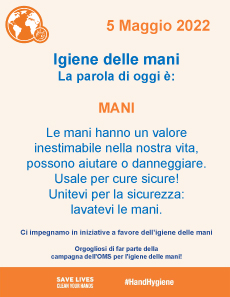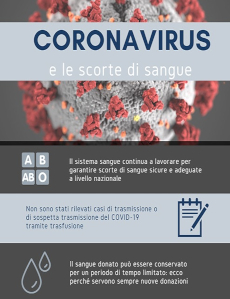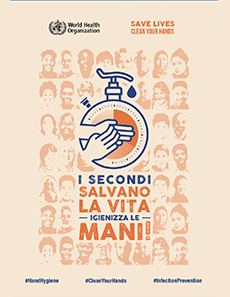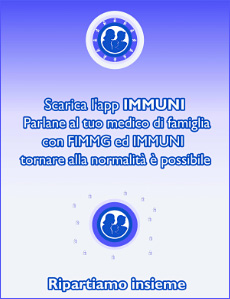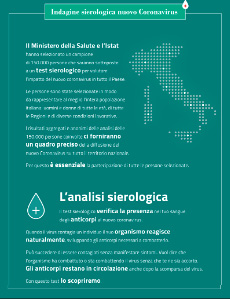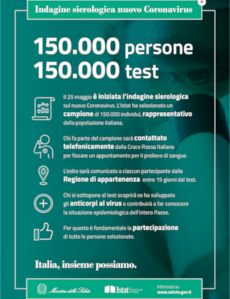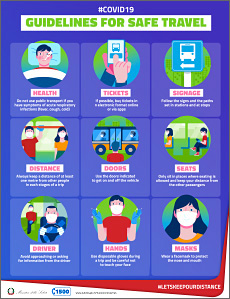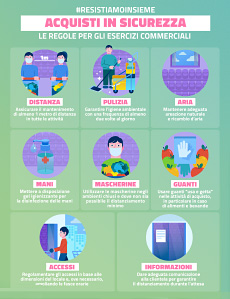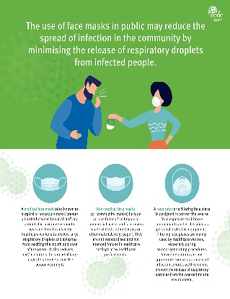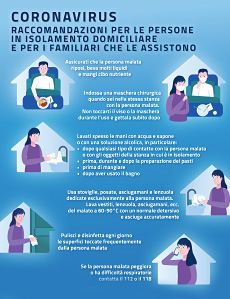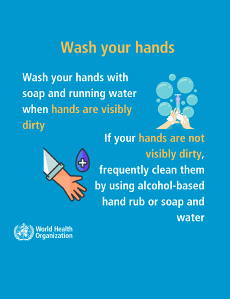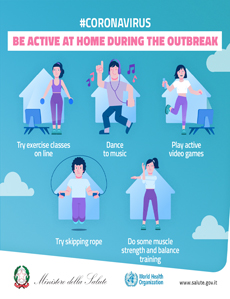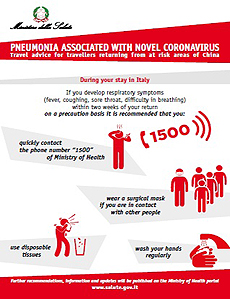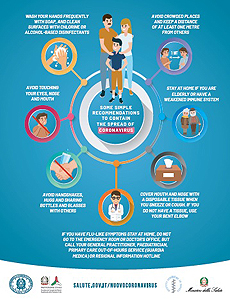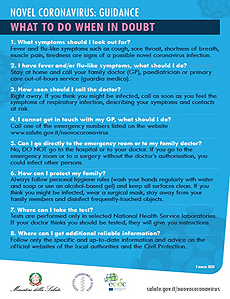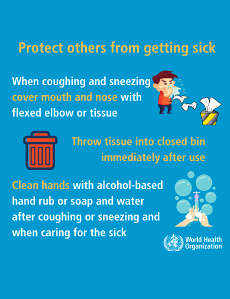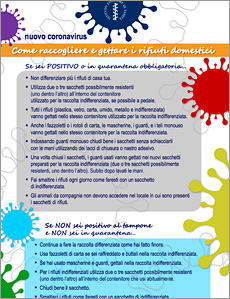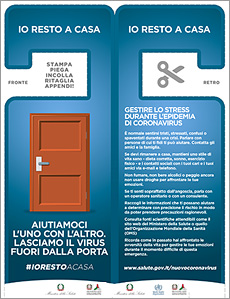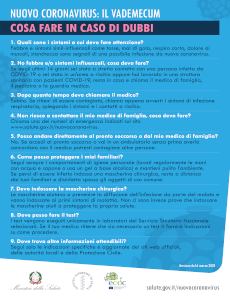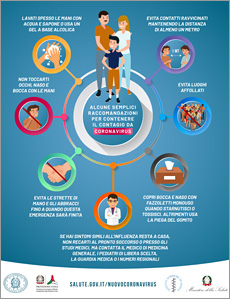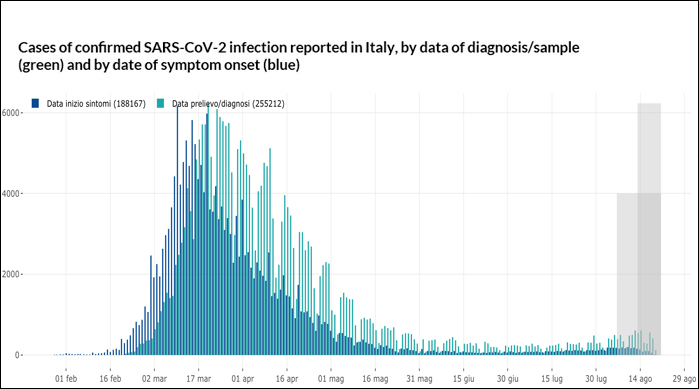
Key points
- The present report is an analysis of the data for the period of August 10-16, 2020. Due to the time between exposure to the pathogen and the development of symptoms and between these and diagnosis and subsequent notification, many of the cases notified this week are likely to have become infected 2-3 weeks before notification, i.e. mainly at the end of July. Some of the cases identified by screening, however, may have contracted the infection in earlier periods.
- An increase is confirmed in the new cases reported in Italy for the third consecutive week, with a cumulative incidence (ISS flow data) in the last 14 days (period 03/8-16/8) of 9.65 per 100 000 inhabitants, up from the period 6/7-19/7 and similar to the levels observed at the beginning of June. The majority of cases were developed on the national territory (28.3% of new cases diagnosed during the monitoring week were imported from foreign countries).
- In Italy, similarly to Europe and worldwide, there has been an epidemiological transition of the SARS-CoV-2 epidemic, with a sharp drop in the average age of the population developing the infection. The average age of the cases diagnosed in the last week is 30 years. Circulation today occurs more frequently in younger age groups, in a context of increased reopening of commercial activities (including places of aggregation) and increased mobility. There is a change in the dynamics of transmission (with emergencies of cases and outbreaks associated with recreational activities, both at home and abroad) and a lower clinical severity of the cases diagnosed which, in most cases, are asymptomatic.
- The national transmission index (Rt) calculated on symptomatic cases and referring to the period 30 July - 12 August 2020, is 0.83 (0.67 - 1.06). This indicates that, net of the asymptomatic cases identified through screening/tracking of contacts and cases imported from foreign countries (these categories are not mutually exclusive), the number of symptomatic cases diagnosed in our country has been substantially stable in recent weeks.
- At this particular time of the epidemic, the transmission index (Rt) calculated on symptomatic cases, while remaining the most reliable indicator at regional level and comparable over time for monitoring transmissibility, may slightly underestimate the actual virus transmission at national level. Therefore, the national Rt should always be interpreted also taking into account the figures referring to frequency.
- In all Regions/PPAA, new cases of SARS-CoV-2 infection were diagnosed during the current week of monitoring. In this week of monitoring, 28.6% of new cases diagnosed in Italy were identified through screening activities, while 34.0% were identified through contact tracing activities. The remaining cases were identified as symptomatic (30.4%) or the reason for the diagnostic finding was not reported (7.1%). Therefore, 63% of the new cases were diagnosed thanks to intensive screening and case investigation, including identification and monitoring of close contacts.
- Nine Regions/PAA reported an increase in the number of cases diagnosed, compared to the previous week (ISS flow), which cannot be attributed solely to an increase in imported cases. Although the number of new cases in many regions remains low, in other regions a high number of new cases continues to be reported. This should call for caution, as it shows that in some parts of the country the circulation of SARS-CoV-2 is still significant. Although an increase in the number of hospitalizations is reported in some Regions, none of the Regions/PPAA have shown any signs of overloading of their health services been, and the current outbreaks are promptly identified and investigated.
- During the current monitoring week, a total of 1077 active outbreaks were reported, of which 281 were new (the approved definition of an outbreak foresees the identification of 2 or more related positive cases), both increasing for the third consecutive week (in the previous monitoring week, 925 active outbreaks were reported, of which 225 were new). This implies a strong commitment of territorial services in contact tracing activities, which is proving effective in containing local virus transmission, as demonstrated by Rt values below 1 in most Regions/PAA.
Conclusions
- Following the reduction in the number of cases of SARS-CoV-2 infection due to lockdown measures, Italy is in a transitional epidemiological phase with a progressive worsening trend. Also in this week there is widespread transmission of the virus throughout the national territory, which, when favourable conditions occur, causes outbreaks even of significant size, often associated with the importation of cases from foreign countries and subsequent local transmission (even on return after vacation periods in countries with higher virus circulation).
- The number of new cases of infection remains on the whole low but with an increasing trend in the last three weeks. This is also due to the search and management of contacts, including quarantine of close contacts and immediate isolation of secondary cases. The reduction in the time span between the onset of symptoms and diagnosis/isolation is one of the reasons for earlier identification and clinical care of people contracting the infection.
- It is necessary to maintain the resilience of the territorial services, continue to strengthen the awareness and compliance of the population, carry out active research and diagnostic investigation of potential cases, isolation of cases, quarantine of their close contacts. These actions are essential to control the transmission and possibly identify rapidly and cope with epidemic upsurges.
- It is essential to maintain a high level of attention and to continue to strengthen contact tracing activities, in order to identify all potential transmission outbreaks at an early stage, and to continue to control the epidemic. For this reason, it remains essential to maintain a high awareness among the general population of the uncertainty of the epidemiological situation and the importance of continuing to strictly adhere to all measures necessary to reduce the risk of transmission such as individual hygiene, use of masks and physical distancing.
- The need to comply with the quarantine measures is reiterated once again, including by identifying dedicated facilities, both for people returning from quarantine countries and following a request from the health authority, having been identified as close contacts in a case. Otherwise, we may see a further increase in the number of cases at national level in the coming weeks.
- The situation described in this report, mainly related to infections contracted at the end of July 2020, confirms the presence of important warning signs related to an increase in local transmission. At the moment, the data confirm that it is appropriate to maintain the prevention and control measures already adopted by the Regions/PAA, as well as maintaining a high level of attention to the preparation of interventions, in case of further worsening developments.
- The population is recommended to pay particular attention to the possibility of infection in crowded situations where non-compliance with the recommended measures is observed. It is also recommended to pay attention to the risk of infection during periods spent in countries with higher virus circulation. In such cases, it is recommended that when returning to Italy, the prevention services should be contacted, in order to receive the relevant directions, and that particular attention should be paid responsibly to the rules of behaviour aimed at preventing the transmission of SARS-CoV-2, with particular regard to the most vulnerable population groups.
Consulta
le
notizie di Covid-19
Vai all' archivio completo delle notizie
Consulta l'area tematica:
Covid-19












